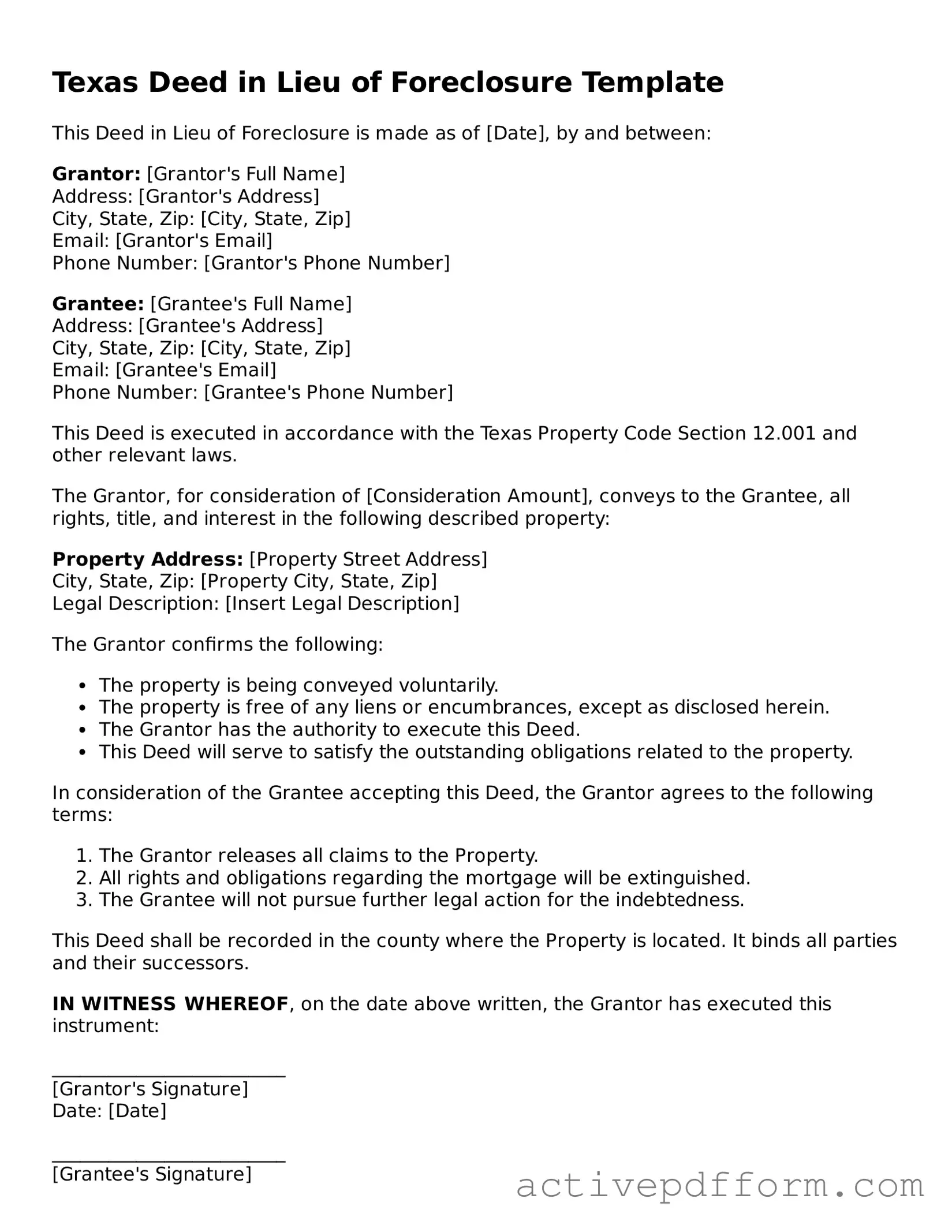Texas Deed in Lieu of Foreclosure Template
This Deed in Lieu of Foreclosure is made as of [Date], by and between:
Grantor: [Grantor's Full Name]
Address: [Grantor's Address]
City, State, Zip: [City, State, Zip]
Email: [Grantor's Email]
Phone Number: [Grantor's Phone Number]
Grantee: [Grantee's Full Name]
Address: [Grantee's Address]
City, State, Zip: [City, State, Zip]
Email: [Grantee's Email]
Phone Number: [Grantee's Phone Number]
This Deed is executed in accordance with the Texas Property Code Section 12.001 and other relevant laws.
The Grantor, for consideration of [Consideration Amount], conveys to the Grantee, all rights, title, and interest in the following described property:
Property Address: [Property Street Address]
City, State, Zip: [Property City, State, Zip]
Legal Description: [Insert Legal Description]
The Grantor confirms the following:
- The property is being conveyed voluntarily.
- The property is free of any liens or encumbrances, except as disclosed herein.
- The Grantor has the authority to execute this Deed.
- This Deed will serve to satisfy the outstanding obligations related to the property.
In consideration of the Grantee accepting this Deed, the Grantor agrees to the following terms:
- The Grantor releases all claims to the Property.
- All rights and obligations regarding the mortgage will be extinguished.
- The Grantee will not pursue further legal action for the indebtedness.
This Deed shall be recorded in the county where the Property is located. It binds all parties and their successors.
IN WITNESS WHEREOF, on the date above written, the Grantor has executed this instrument:
_________________________
[Grantor's Signature]
Date: [Date]
_________________________
[Grantee's Signature]
Date: [Date]
State of Texas
County of [County]
Before me, a Notary Public in and for said County and State, personally appeared [Grantor's Full Name], known to me to be the person whose name is subscribed to the foregoing instrument, and acknowledged to me that he/she executed the same for the purposes therein contained.
Given under my hand and seal this [Date] day of [Month, Year].
_________________________
Notary Public Signature
My commission expires: [Date]
